- Published: Friday, March 31 2017 22:13
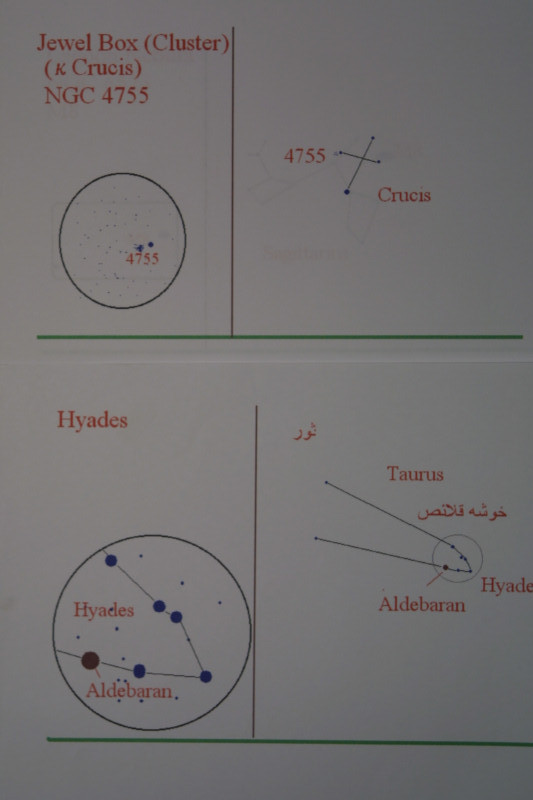
Two pages from Ali Koohpaee’s star chart. The eleven-year old amateur astronomer transfers his naked eye and telescopic sketches to the computer to produce a record of his observations.
The weekend (Thursday and Friday) at the amateur astronomy workshop turned out to be far busier for me than anticipated. One hundred fifty amateur astronomers attended despite only six weeks notice. Most were university and secondary students, many others were teachers but almost all were young compared with amateur workshops in the US. The timing was difficult for many attendees with final exams and university entrance exams looming for most. But this was clearly something not to be missed by the more serious amateurs of Iran.
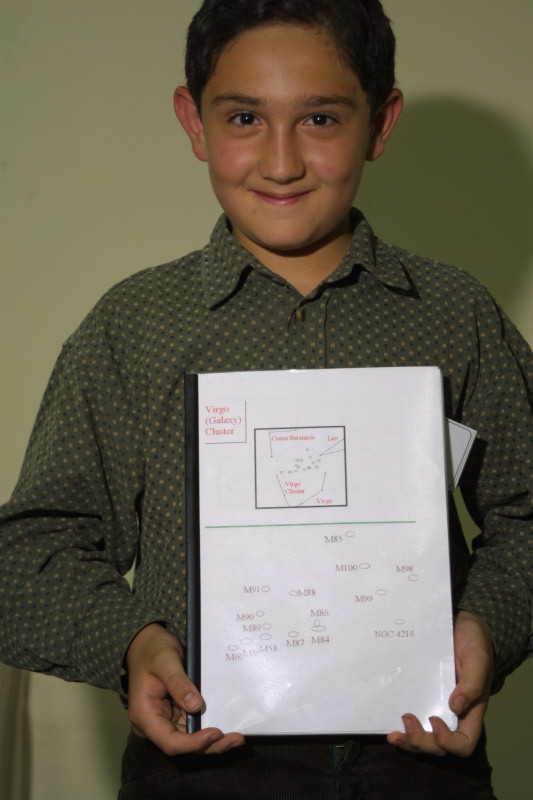
Eleven-year old amateur astronomer Ali Koohpaee and the Virgo Cluster in his personal star chart. Ali transfers his naked eye and telescopic sketches to the computer to produce a record of his observations.
The youngest, Ali Koohpaee, is something of a celebrity in the amateur community here. At eleven years old, Ali’s abilities and accomplishments are remarkable. He is very serious about amateur astronomy, a hobby he took up at the age of five. He acquired his first telescope two years later and now is the proud owner of a 4 ½-inch Newtonian telescope and 20x60 binoculars, both of Russian origin. In Iran where even a modest telescope is a major investment, most amateurs spend at least a year studying the subject and observing the sky without optical aid. Ali has combined his naked eye and telescopic observing experience by drawing the constellations, marking the location of objects he has observed in them and then making finder charts, all with the use of computer graphics. But despite his intense enthusiasm and focus he retains all the characteristics of an 11-year old with a shy smile and giggle that charm the adults around him.
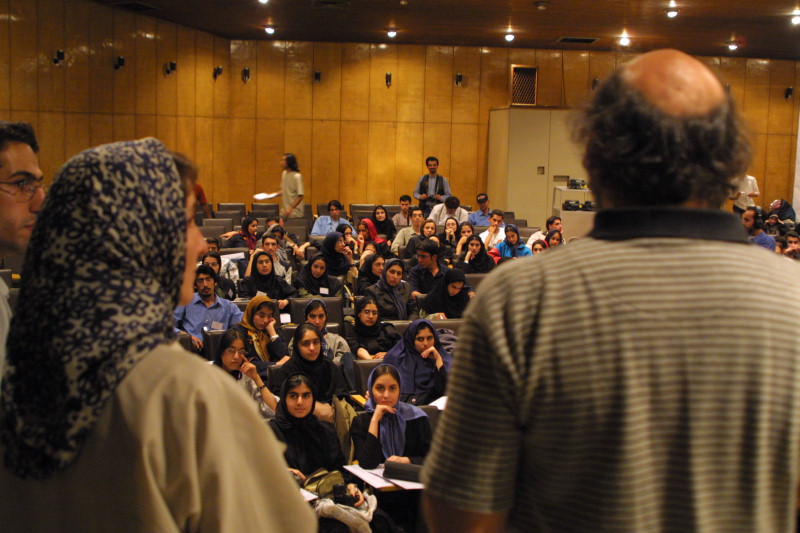 German astronomers, photographers and professional video producers Pascale Demy and Gernot Meiser address the workshop. Their multimedia presentation on eclipse chasing and photography was a spectacular finale to the weekend.
German astronomers, photographers and professional video producers Pascale Demy and Gernot Meiser address the workshop. Their multimedia presentation on eclipse chasing and photography was a spectacular finale to the weekend.
Conference presentations covered everything from naked eye observing and projects such as measuring separations with the instruments of the ancients to video astronomy. I gave a brief talks on amateurs in the US and the upcoming transit of Venus, the first such event since the 19th century and one for which Iran will be an ideal location when it occurs in 2004. I also made a brief demonstration (cut short by Internet problems) of remote operation of the 24-inch telescope of the Telescopes in Education (TIE) program at Mount Wilson Observatory http://tie.jpl.nasa.gov/tie). This was highly anticipated as this type of program is a way for Iranian schools to not only use facilities that would be beyond the grasp of even western classes but also a way to cooperate in western programs. They see this as a way of bringing students in many countries together which is, indeed, the goal of the new Global TIE program. With users throughout the world and telescopes now in Chile and Australia, Global TIE plans to cover the world with robotic 14-inch telescopes available to the world’s students covering the north and south skies at all times. The amateurs and teachers of Iran hope that they might be a part of this global community in the future, a natural extension of President Khatami’s proposed Dialogue of Civilations that has been accepted by the United Nations.
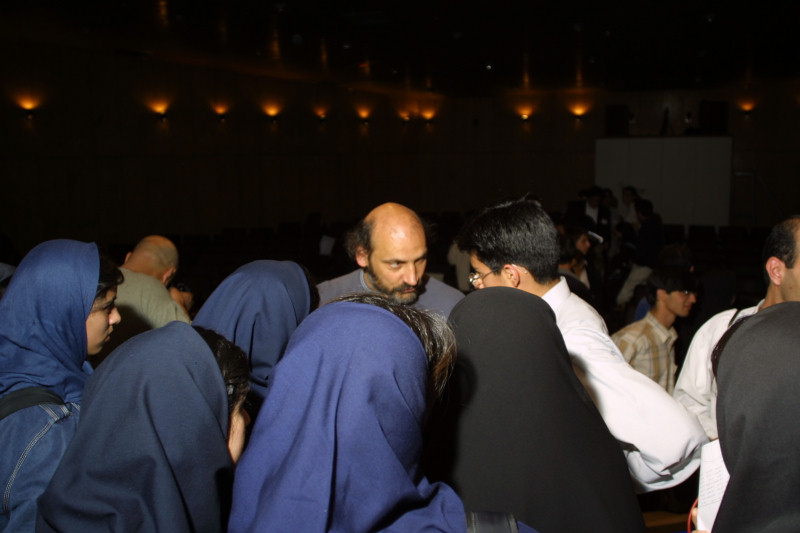
German astronomer and video producer Gernot Meiser with the ever-present crowd of workshop attendees during a break in the proceedings. Enthusiastic and curious, there were always more questions than could be answered during the weekend.
A multimedia program on eclipse-chasing travel and observing by Pascale Demy and Gernot Meiser of Germany closed the conference. This spectacular presentation was the best I have seen on conveying the romance and science of eclipse chasing. Describing these professionals’ presentation would be as difficult as conveying the experience of totality. I can only say I was very happy not to have to follow them on the schedule.
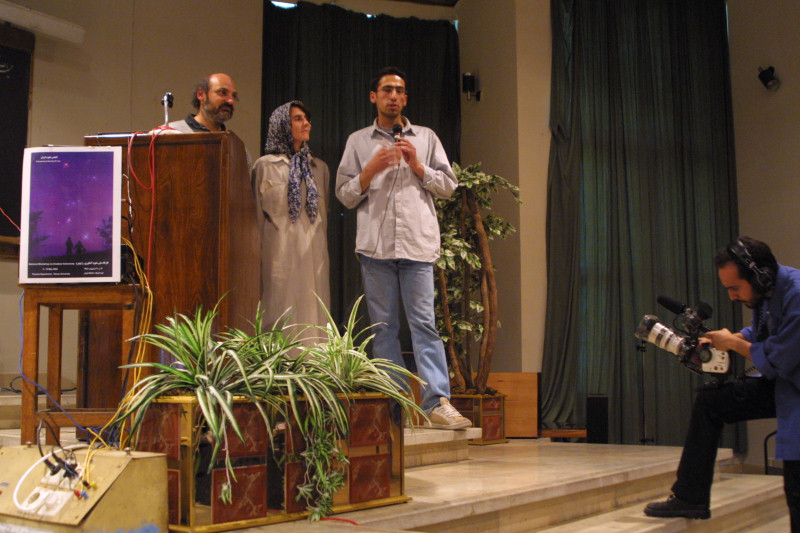
German astronomers, photographers and professional video producers Pascale Demy and Gernot Meiser wait as Babak Tafreshi translates their presentation to the workshop. Sivash Safarianpour, a producer of astronomical documentaries for television, tapes the proceedings. The workshop poster is displayed in front of the podium.
Finding projects to do is a common theme among the amateurs in Iran. They ask me often about their counterparts in the US and projects they do that might carry over to Iran. It’s a difficult question to answer sometimes because of the large difference in the telescopes, cameras and other equipment between the two countries but they’re very happy to know of observing lists and programs that are adequate for the small telescopes and binoculars more common among the more serious amateurs here. The emphasis is, appropriately, on enjoying the night sky rather than pushing the limits of their capabilities with more advanced equipment. They have developed great expertise in wide angle astrophotography with historical or natural foreground objects. But they are also always looking for ways to study the science of astronomy more directly.

The weekend amateur astronomy workshop was a cooperative project of several universities and organizations. These students workshop of the organizing committee of Tehran University’s Physics Department that hosted the event kept things running smoothly despite the usual technical problems.
Their curiosity about how US amateurs function extends to the organization and financing of amateur clubs. In Iran a club needs official sanction to operate but the bureaucracy often makes attaining official status difficult. They ask about how the administrative work of the societies are accomplished and if government funds are available. In response I stress the teamwork of volunteers that make amateur pursuits such as meetings, star parties, public outreach, conferences and other programs possible without outside assistance. Enthusiasm is something that the amateurs of Iran have in abundance. What is sometimes lacking is the experience of directing this enthusiasm towards common goals. But they are finding new ways to cooperate towards this end and I expect that on my next visit to Iran I will find them telling me a few things about how to get things done through teamwork.
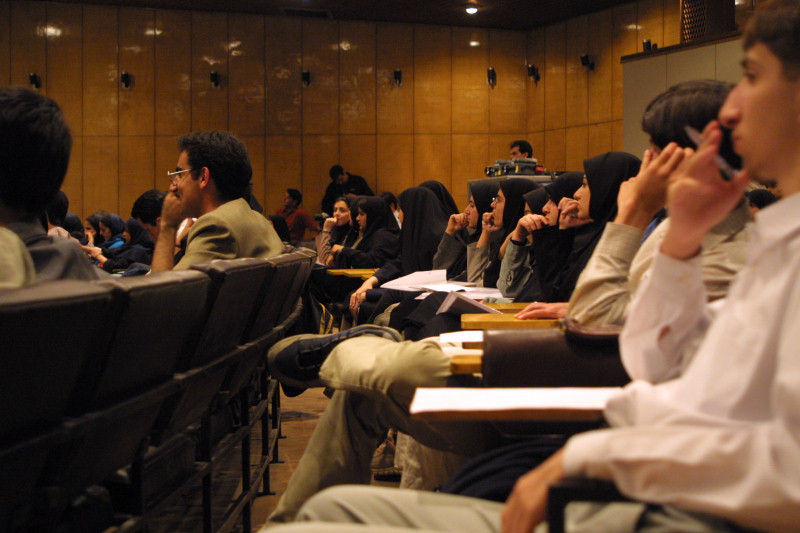 Part of the attentive audience of the amateur astronomy workshop held at the University of Tehran. Iranian and foreign presenters covered a wide variety of topics of interest to Iran’s amateur astronomers.
Part of the attentive audience of the amateur astronomy workshop held at the University of Tehran. Iranian and foreign presenters covered a wide variety of topics of interest to Iran’s amateur astronomers.







